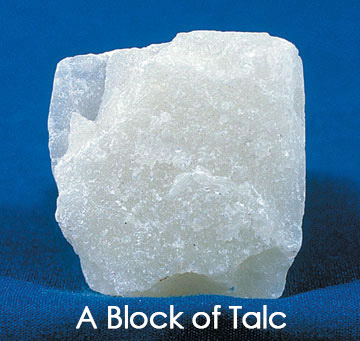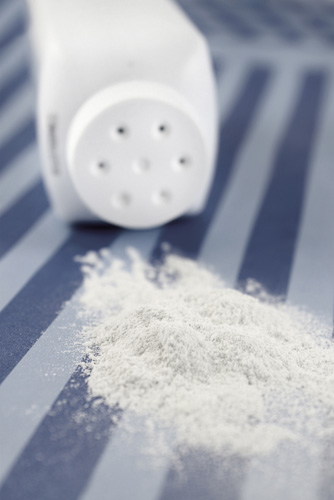Free Case Evaluation
You will never be charged a fee unless a recovery is made for you.

Mesothelioma and talcum powder have been linked. Talc, the softest mineral on Earth, is used in making talcum powder. Asbestos, a term that actually refers to six different minerals, often forms in the earth next to talc. So when talc is mined, it may contain or be contaminated with asbestos. That means that some talcum powders contain asbestos, which is why there are cases of mesothelioma that have been linked to use of talcum powder—because users of talcum powder breathed in asbestos when using the powder.
Talc and asbestos often form side by side in the earth. Current research indicates that talc does not cause or promote mesothelioma. But because talc may be contaminated with asbestos, when a vein of talc is mined that is adjacent to asbestos, some talcum powders may contain asbestos and therefore could be linked to a user developing mesothelioma.
There are many current mesothelioma and talc lawsuits being tried on these grounds in the U.S.—cases claiming that use of talcum powder caused mesothelioma. Many revolve around Johnson & Johnson’s iconic Baby Powder as well as their Shower to Shower talcum powder. And at least three cases have been settled by Johnson & Johnson for undisclosed amounts of money—in California, Oklahoma, and New York. There are also talcum powder lawsuits being filed by women who claim they developed ovarian cancer because the powder they used was contaminated with asbestos.
If you or someone you love has mesothelioma or asbestos lung cancer that you think was caused by the use of talcum powder, contact us. We have access to the expertise, resources, and manpower to fully investigate each case and fight for and with our clients against the big corporations to seek the justice they deserve. Our experienced attorneys take a personalized, compassionate approach. We cut through the legalese and partner with our clients.
Contact us for a free consultation. You pay nothing unless we win your case. Call us at 800-796-1636 or submit your case details online and someone will contact you shortly.

In 1999, a woman with mesothelioma sued Johnson & Johnson. Her belief was that decades of using their baby powder on her babies as well as on herself had caused her disease. J&J denied her claim, and absent enough proof at the time, she dropped the suit. However now, two decades later in 2019, J&J has finally been compelled to share thousands of pages of company memos and reports and confidential documents due to new cases being filed. Those documents show that from as early as 1970 and onward to the early 2000s, Johnson & Johnson’s raw talc and finished powders sometimes tested positive for small amounts of asbestos. Furthermore, those same documents show that J&J personnel—executives, scientists, doctors, attorneys—discussed and worried about how to address the contamination, but they did not disclose the contamination to regulators or the public.
A Reuters’ investigation found the earliest mention of contaminated J&J talc occurred in reports compiled in 1957 and 1958 by a lab consulting with J&J. But in 1976, when the U.S. Food and Drug Administration (FDA) was evaluating limits on asbestos in cosmetic talc products, J&J assured them that no asbestos was found in any sample of talc they tested that was produced from December 1972 to October 1973. They neglected to tell the agency that three tests conducted from 1972 to 1975 by three independent laboratories had found asbestos in J&J’s talc. In one report, in fact, the laboratory stated that the levels of asbestos found were “rather high.” Most of Johnson & Johnson’s asbestos test reports did find no asbestos, although early tests were not rigorous enough to detect trace amounts, and only a fraction of their talc was tested. But, as noted, some of their tests did detect asbestos and they chose to keep those results private.
The World Health Organization (WHO) and other organizations and experts do not recognize any safe level of asbestos exposure. While some people who have been exposed to asbestos never develop mesothelioma or another asbestos lung disease, others do. And for some, small amounts were enough to activate the disease many years later.
Sources
You will never be charged a fee unless a recovery is made for you.